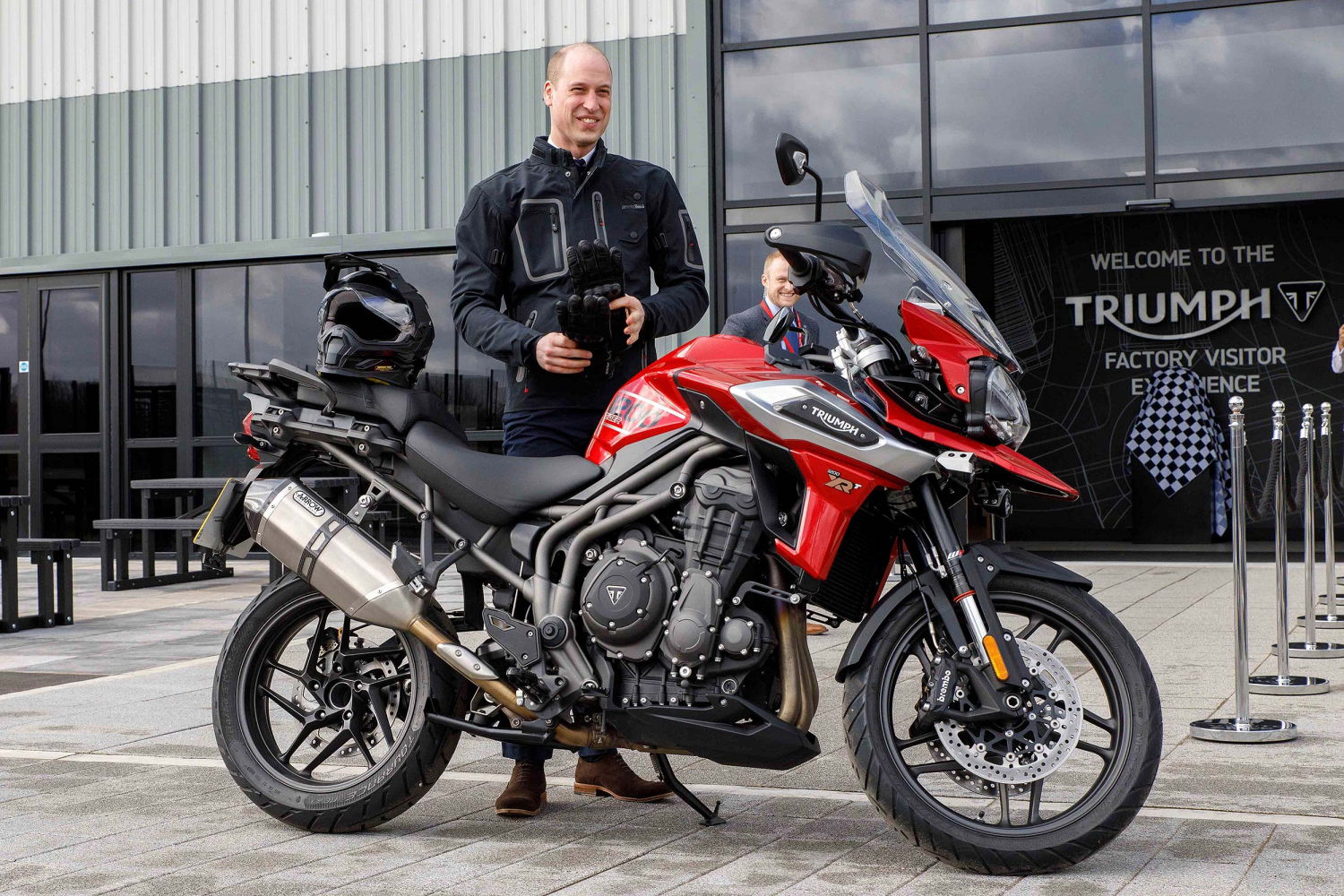Top of the Grey Scale | Top 10 BEST Grey Import 400cc Motorcycles ever made
Visordown takes a look at the best grey import motorcycles of all-time, and we wonder if the phenomenon could soon make a return...

WITH Kawasaki producing its new, four-cylinder, 250cc, 50bhp Ninja ZX-25R for parts of south-east Asia (soon to come here as the ZX-4R!) and Honda also having a sadly non-UK 40bhp CBR250RR twin you’d be forgiven for being reminded of the ‘golden era’ of grey import supersport 400 motorcycles.
Back in the early 1990s, uber-exotic Japanese-market 250 two stroke and 400cc four-stroke sportsters, which had been conceived and created to comply with domestic licensing laws, suddenly became hugely popular as unofficial, ‘grey’ imports in the UK.
In Japan, bikes like Honda’s ‘mini-RC30’ VFR400R and Yamaha’s FZR400RR, not to mention two-stroke GP replicas like Honda’s NSR250RR, were so popular there was even a domestic, factory-supported national racing championship in turn leading to even more exotic, homologation-special ‘SP’ versions. Honda’s 1994 NSR250R SP ‘MC28’, for example, is still considered the closest production bike ever to a GP machine due to, not only its 90º stroker twin but also its exquisite chassis including Pro-Arm rear, ‘Smart Card’ keyless ignition and replica Luca Cadalora styling right down to its Rothmans paint.
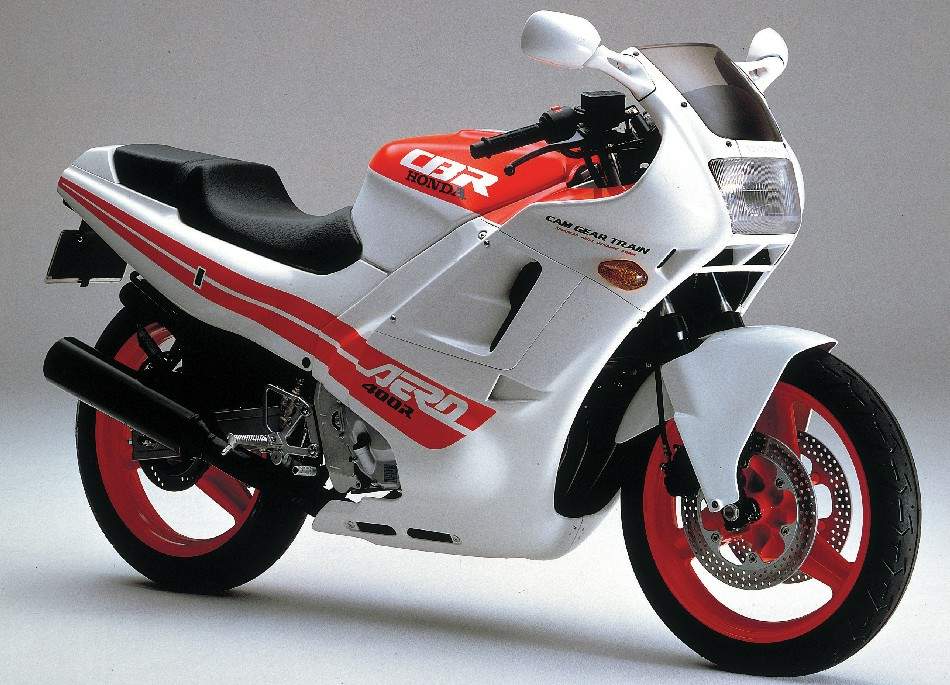
At the same time, such bikes had an extremely short ‘shelf life’. Japan’s ultra-stringent equivalent of the MoT meant bikes over three years old were virtually worthless and, with most of these exotic models never officially available in the UK it created an opportunity for ‘grey’ importers such as BAT and D&K to economically buy up such bikes in Japan, ship them by their container-load to the UK and sell them, still for a comparative song, as a sporty stepping stone to 600s, 750s and 1000s. Today, a 44bhp, twin cylinder Ninja 400 is considered to fill the same role, for around £5500. Back in 1994 you could get a far higher spec (albeit three years old), 60bhp, four-cylinder ‘mini RC30’ for around £3K. No wonder they were snapped up in droves. Junior supersports fans had never had it so good.
It couldn’t last, of course. By the late 1990s Japanese fashions and restrictions had changed while at the same time ‘parallel’ imports of bikes from the Continent to the UK enabled cheaper 600s and 750s. Then, in 2003, the introduction of ‘MSVA’ (Motorcycle Single Vehicle Approval) regulations on non-EU bikes made Japanese imports prohibitively expensive.
Twenty years on, few, good examples of these 1990s ‘mini-marvels’ survive making the best command exorbitant prices. While unless something changes, MSVA, import duty, shipping costs and more, also makes getting hold of a Ninja ZX-25R likely to cost £10K+. Until that does change, however, here’s our pick of the best, original, grey import supersports, in chronological order – and what they’re likely to cost today.
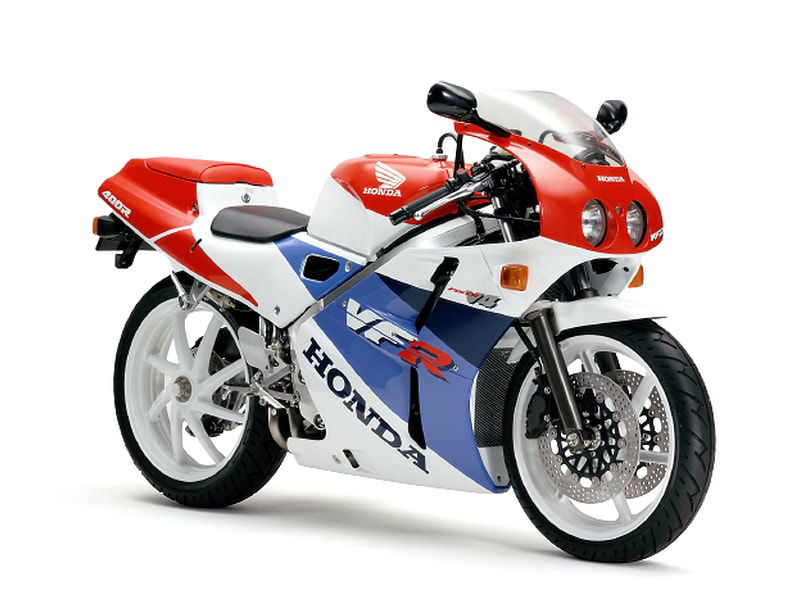
1988-1994 Honda VFR400R (NC30), £3,000-7,500
There were actually earlier versions of Honda’s 400 V4 motorcycles (eg the NC21) but the ‘mini RC30’ is by far the most popular and boasted an impressively flexible delivery and sublime handling. It’s impressively durable and reliable, too. Although not built quite to RC30 spec it’s detailing and style is fabulous, its 59bhp more than ample. A slightly higher spec version was briefly officially imported by Honda UK in 1990 and raced to 2nd place in the Supersport 400 TT by no less than Carl Fogarty but at around £6000 it was more expensive than a CBR600F. Today, prices are on the rise. Was a time you could get one for around £1000, now considered a classic you’ll be lucky to find anything under £4K.
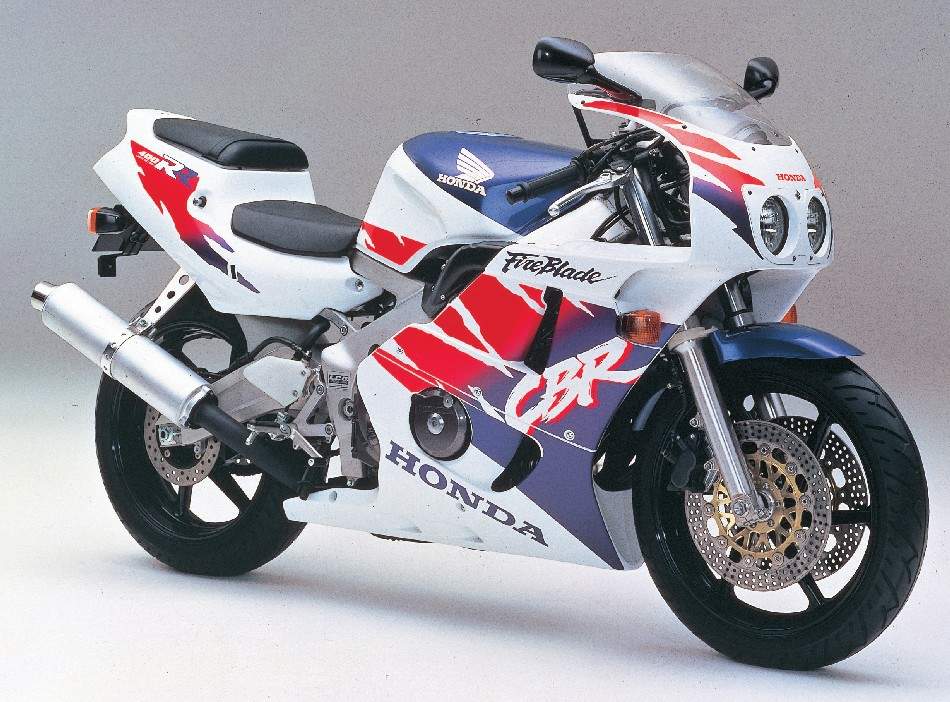
1988-1997 Honda CBR400RR (‘Baby Blade’), £1,850-3,750
Honda’s ‘straight four’ supersports is, to some, even more of a classic than the NC30. Again covering a number of models, the later ‘NC29’ models were effectively junior versions of the CBR900RR with the exquisite, 1994-RRP version generally considered the best. Its high-revving four is, again, decently flexible compared to some and its dinky proportions and low seat also make it popular with smaller and female riders. Good ones are no prized and rare.

1988-1998 Suzuki GSX-R400, £1,850-4,500
Again, just like its bigger brother 750 and 1100s, Suzuki’s ‘baby Gixxer’ was available over a variety of models over its lifespan, none of which were officially imported into the UK with all remaining, oddly, the least popular of the Japanese 400 offerings in the UK. Nor were they ever successfully raced over here (we put it down to the dominance of Suzuki’s two-stroke, the RGV). Don’t dismiss it, though. Although early models are now decidedly ‘old school’ and unlikely to have worn well, they’re now gaining classic status, later versions have inverted forks and more and prices are on the rise.
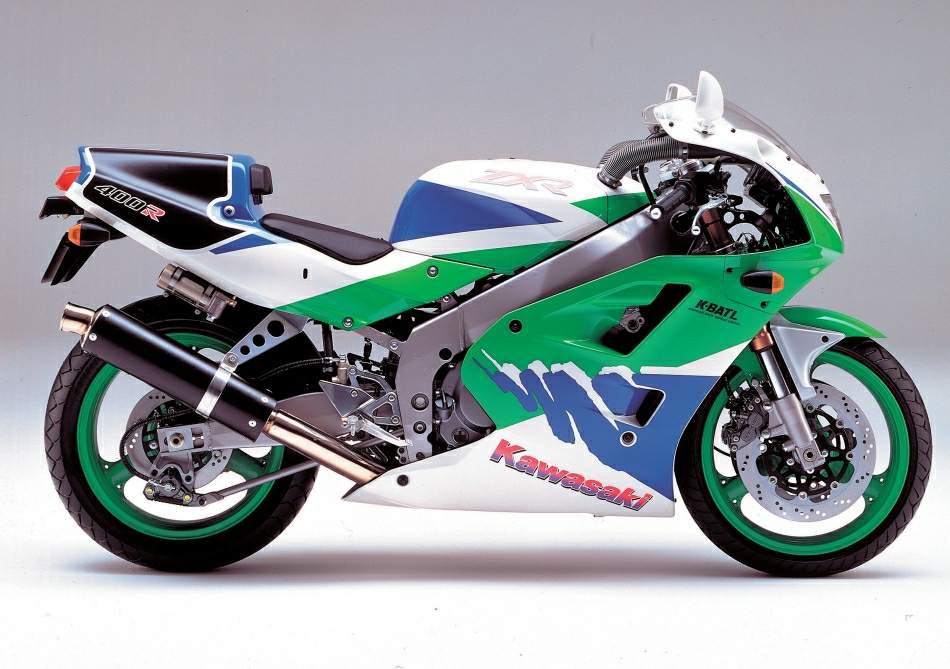
1991-2003 Kawasaki ZXR400, £1,900-4,000
Unique among Japanese supersport 400s in being officially imported into the UK (complete with mph speedo etc) right up to 2003. There are pros and cons to that. Pros include availability and affordability (to go with its screaming engine and delightful steering); ‘Cons’ include diminished exclusivity and reduced ‘exotic’ appeal. Higher spec ‘SP’ versions are virtually unheard of, too, although a few did come in as ‘greys’, as did some pre-1991 H1 and H2 versions.

1992-1996 Yamaha FZR400RR, £2,000-4,000
Like most of the motorcycles here, Yamaha’s screaming transverse four was available in a variety of successive models from 1986 – indeed, the original FZR1000 Genesis of 1987 was actually preceded by the Japan-only FZR400 Genesis of 1986. But again it’s the later, 1990-on models which are the best. Effectively a ‘pocket’ FZR1000, the 400RR is small, light, focused, high revving and one of the best handling bikes ever. The SP version, with single seat, close ratio box etc, was better still, briefly officially imported (at a whopping £6749) and won the 1992 Supersport 400 TT. More fragile and less durable than Honda’s NC30, good ones today are extremely rare,

1994-2000 Honda RVF400 (NC35), £4,500-7,500
Successor to the NC30 was naturally modelled on the RVF750R/RC45 and is, of course, exquisite. But it was also too late and expensive to match the NC30’s popularity (bikes only started trickling into the UK from 1996/7). Updated styling, inverted forks and more practical wheel sizes (the NC had an 18-inch rear) makes it the most modern of all grey 400s – and still the priciest today.
And what about the pick of the two-stroke motorcycles?
Two-stroke supersports of the early 1990s era are less easy to categorise. Overall, the class comprised either 400cc, four-cylinder four-strokes, as above, or 250cc, twin cylinder two-strokes. Although the former type was generally only available as a grey import in the UK (yes, we know there were exceptions), the latter was well catered for here by Yamaha’s TZR250, Kawasaki’s KR-1 & KR-1S and, perhaps most famously, Suzuki’s RGV250. That said, some Japanese versions didn’t make it, most conspicuously the higher spec versions, which then did come to the UK as grey imports. The following are the most prized examples.

1990-96 Yamaha TZR250R, £5,000-10,000
Although the 1986 original, V-twin TZR250 was officially imported to the UK, the succeeding, ever-more-exotic models weren’t. These comprised the parallel twin, ‘reverse cylinder’ 3MA in 1990 which also had upside down forks and, from 1991, the even more exotic and beautiful V-twin 3XV which came in a boggling array of specs including R and SP versions, with dry clutches, different power valves and more and which is now considered one of the most desirable ‘grey’ supersports of all.
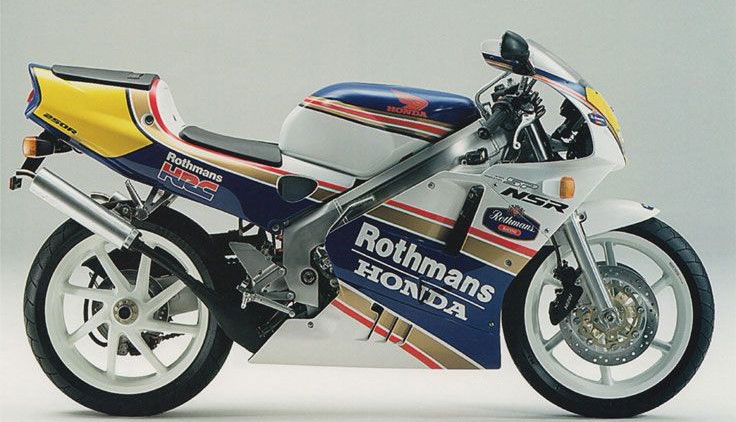
1987-1999 Honda NSR250R, £5,000-12,000
As Honda never really imported a performance 250 stroker into the UK it’s often less well known that ‘Big H’ was responsible for probably the most exotic, exclusive, desireable and expensive ‘grey’ supersports of all – the NSR250R. The first, the 1987 MC16, was a fairly conventional-looking, 90º V-twin styled much like Freddie Spencer’s 1985 250 championship winning machine but from the there things advanced quickly: the 1988 M18 got an updated chassis and styling, subtly tweaked again in 1989. The 1990 MC21 got a ‘gull arm’ swing arm and sharper still styling then 1994’s ultimate incarnation, the MC28, got a ProArm rear and more. Today, it’s grey import royalty.

